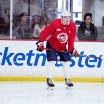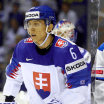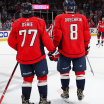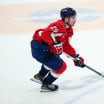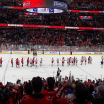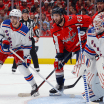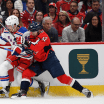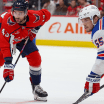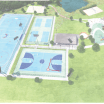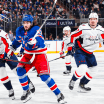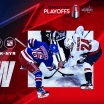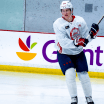Capital Gains
Capitals add physicality and size to bolster the lineup during the offseason
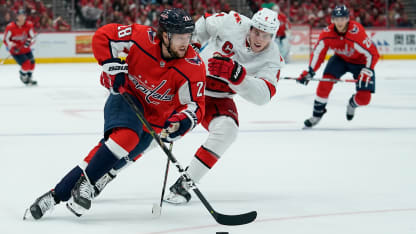
Enter free agent forwards Richard Panik, Garnet Hathaway and Brendan Leipsic, who all signed on July 1. Throw in rugged defenseman Radko Gudas - acquired in a trade last June - and the Capitals are confident they've added an appropriate blend of size and speed to complement their returning core.
After the St. Louis Blues rode one of the NHL's bigger lineups to a Stanley Cup win last spring, there was a popular belief that contending teams would follow suit in their own roster construction. MacLellan believes it's important to have a healthy mix.
"I think you need a certain amount of heaviness," he says. "But you can't have too heavy of a lineup. You still need a certain amount of skill and speed. The thing I like about Panik and Hathaway is that they both skate well. Garnet has good north-south speed. Panik is a really good skater for his size. So, I don't think that we're sacrificing on the speed side to add heaviness. I think we got big players that can skate and play well."
Panik, 28, and Hathaway, 27, signed four-year contracts while Leipsic, 25, agreed to a one-year pact. Panik is expected to fill a void on Washington's third line, where he'll primarily skate alongside Carl Hagelin and Lars Eller. The trio is versatile and all three veterans can be trusted defensively.
Panik is playing for his fifth organization in seven years and is looking forward to some stability in Washington where his role will be well defined. He is also set to become a fixture on the Capitals' revamped penalty kill. While Washington ranked 24th in shorthanded situations last season, Panik emerged as a key cog on the NHL's top PK unit in Arizona.
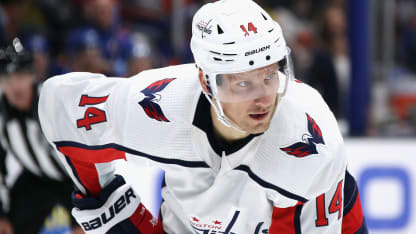
"When I was younger, I didn't want to play that," he says of the PK. "I wanted to play more power play. Now that I'm older, I think it gets you more engaged in the game. You keep moving your feet; you're not just sitting on the bench, so it gets you more involved."
Hathaway is also expected to be deployed on the penalty kill while providing some secondary scoring on the fourth line. The Brown University alum arrives in Washington fresh off four years in the Calgary Flames organization. Hathaway had career-highs across the board last season with Calgary with 11 goals and 19 points in 76 games. He also led the Flames with 200 hits.
"You see the skill that's on the team already," Hathaway says, "the culture that's in the room and the organization. I want to add to that physicality. It's something we talked about and it's something I'm looking forward to."
Leipsic is settling in with his fifth team over the last three seasons, but the Capitals have proven to be a terrific landing spot in recent years for low-risk signees who haven't quite found their niche in other organizations. Consider past acquisitions Brett Connolly, Alex Chiasson and Devante Smith-Pelly, who were originally all signed to one-year deals with Washington before proving their worth.
"They were looking for some depth energy and depth scoring," explains Leipsic. "They've got some guys that are big boys. Hopefully I can bring a little bit more tenacity and play with a little bit more of an edge."
In addition to mainstays Alex Ovechkin [6'3", 236] and Tom Wilson [6'4", 220], the additions of Hathaway [6'3", 210] and Gudas [6'0", 205] give the Capitals four of the NHL's top-30 hitters from last season.
"Some of the players we added were not by accident," says head coach Todd Reirden. "That's what you can look to see- some guys that aren't necessarily all that fun to play against."
The Capitals preached throughout training camp that they'd like to be tougher to play against this season. It's hardly a novel concept and the commonly held mantra throughout the league can be hard to define. But ask the Capitals how they define 'tough to play against' and they say it's more than simply delivering a bone-crunching hit.
"It's not always about running a guy over in the middle of the ice," says Leipsic, who is expected to compete for playing time on the fourth line. "It's on the forecheck, being right on guys, not giving them time and space, being in your face, backchecking with energy… Whenever we can bring some energy, forecheck, backcheck, turn pucks over, I think we'll do that."
Despite winning a fourth consecutive Metropolitan Division title last season, the Capitals concede they were not always as tough on the opposition as they needed to be. In addition to the inconsistencies on the penalty kill, the Capitals allowed the second most high-danger shot attempts at five-on-five according to Natural Stat Trick.
The Capitals expect to clamp down defensively this year after allowing 3.02 goals-per-game last season (their highest total since 2006-07). Among the priorities is to limit scoring chances against in transition. A more aggressive style of play that Reirden has implemented this season, combined with the fresh personnel should make for a stingier club.
"It's those details," Hathaway says. "It's not only going hard on the forecheck and hitting guys a bunch. It's more about smothering the opponent- not giving them a lot of room on the ice, not giving them a lot of space. I think 'hard to play against' is about limiting the other team to do what they want to do."
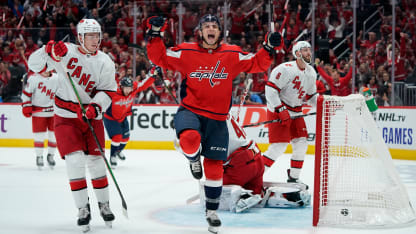
Hathaway ranked second among Calgary forwards last season, with the Flames allowing 9.33 high-danger shot attempts per 60 minutes of five-on-five play. Leipsic (9.19) ranked third among Los Angeles Kings forwards while Gudas (8.81) was tops among Philadelphia Flyers defensemen.
Ideally, the Capitals hope to use their size and speed to wear down other teams and limit their ability to transition. As they got their feet wet in preseason play last month, there were several examples of the Capitals using an aggressive forecheck to force turnovers and create their own high-danger scoring chances.
"There are teams that are hard to play against because they compete harder," says Eller. "Obviously there's a physical aspect with finishing checks and working just as hard without the puck as you do with it. There are guys we brought in that have a physical aspect to their game and they need to use that. I think it can benefit our team."

